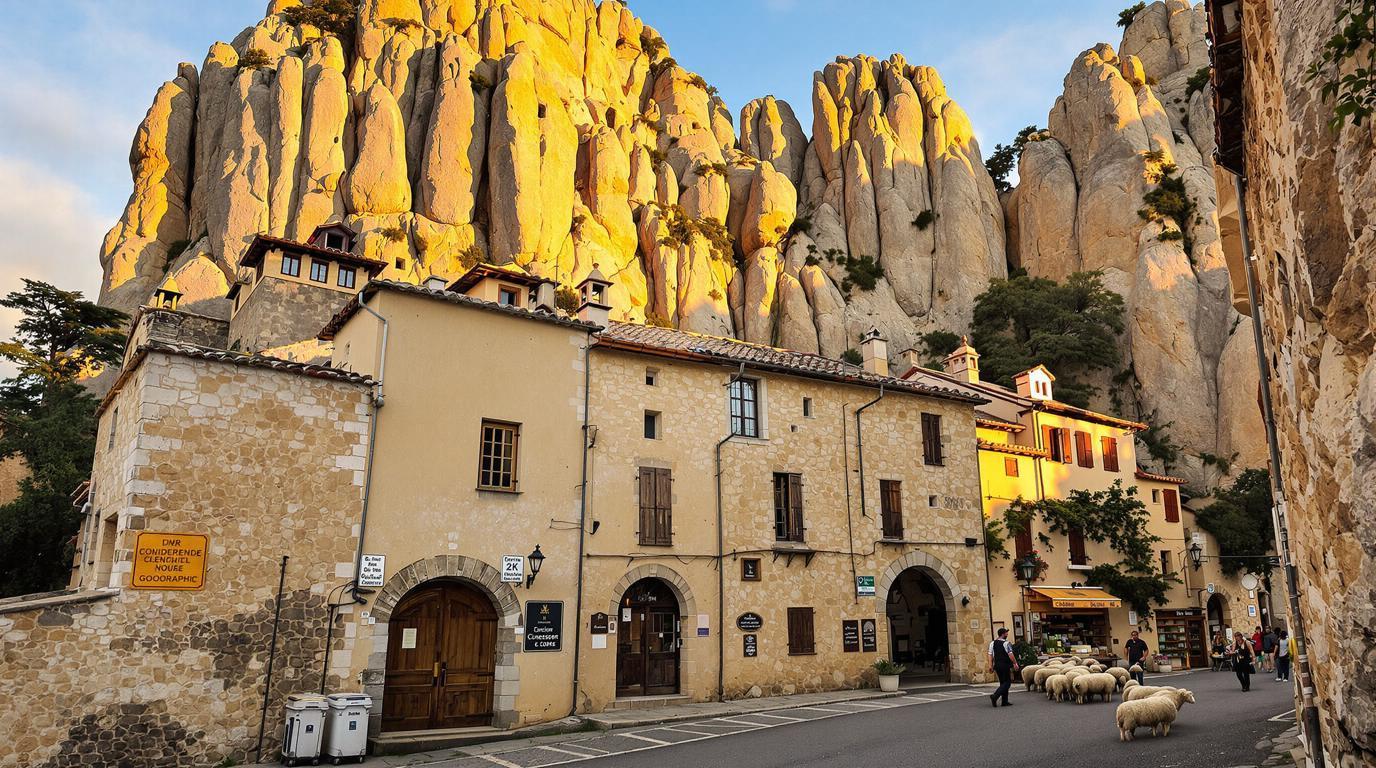Hidden between limestone plateaus and verdant mountains in southern France lies Meyrueis, a medieval gem that whispers tales of Protestant resistance and agricultural tradition. This enchanting village, tucked in the heart of the UNESCO-listed Causses and Cévennes cultural landscape, offers travelers a rare glimpse into authentic rural French life while serving as a gateway to some of Europe’s most spectacular natural wonders.
Where pristine nature meets centuries of history
Meyrueis stands at the magical convergence of the Causse Méjean and Causse Noir plateaus, perfectly positioned at the entrance to the dramatic Gorges de la Jonte. The village’s strategic location made it an important Protestant stronghold during the Wars of Religion, with historical remnants still visible in its architecture and layout.
Today, history buffs can wander cobblestone streets lined with honey-colored stone buildings while outdoor enthusiasts use the village as a launchpad for adventures in the surrounding Cévennes National Park and Grands Causses Regional Natural Park.
“Our village exists in perfect harmony with the land around it,” explains Marie Dubois, whose family has operated a local cheese shop for generations. “The limestone plateaus, the flowing waters, the mountain forests – they’ve all shaped who we are.”
A paradise for outdoor adventurers
The surrounding landscape offers a playground for nature lovers. Hikers can explore countless trails winding through dramatic gorges and across windswept plateaus. Rock climbers flock to the towering limestone cliffs of the Gorges de la Jonte, while underground enthusiasts marvel at the pink-hued chambers of nearby Grotte de Dargilan, one of France’s most spectacular cave systems.
Mont Aigoual, the highest peak in the region, provides panoramic views across multiple French departments and offers challenging terrain for mountain bikers and hikers alike. In winter, the mountain even offers modest skiing opportunities – a secret alternative to more expensive French resorts that locals cherish.
A culinary journey through pastoral traditions
Meyrueis’s gastronomy reflects its agro-pastoral heritage with rich, hearty dishes and farm-fresh ingredients. Local specialties include sheep farmer sausages seasoned with wild herbs gathered from the Causses, and exquisite goat cheeses that benefit from the region’s diverse flora.
Don’t leave without trying fricandeau (a traditional pork and chard dish), or the sweet flaune – a delicate pie made with local sheep’s milk cheese that perfectly balances savory and sweet notes. These culinary treasures offer a taste of medieval French traditions that have remained largely unchanged for centuries.
Where to stay and dine
The village offers accommodations ranging from charming family-run hotels to rustic campgrounds. The Grand Hotel de France provides comfortable rooms with traditional décor, while nature lovers might prefer camping options like Le Pré de Charlet, where stargazing opportunities rival those of more exotic UNESCO destinations.
For dining, L’Aven Gourmand serves excellent regional cuisine using locally-sourced ingredients, while Le Jardin des Glaces offers a more casual atmosphere perfect for families. Both showcase the distinctive flavors that make this region a hidden treasure for culinary explorers.
When to visit this hidden gem
The savvy traveler should visit between September and November when hotel rates drop and the summer crowds disperse. The autumn colors transform the surrounding forests into a spectacular tapestry, while the cooler temperatures make hiking and climbing more enjoyable.
“September is magical here,” notes Jean Moreau, local hiking guide. “The light is golden, the air is crisp, and you might have entire trails to yourself – something unimaginable in places like Positano or other overtouristed European villages.”
Meyrueis offers the rare combination of unspoiled natural beauty, rich cultural heritage, and authentic rural French charm that increasingly eludes travelers in our globalized world. Here, beneath limestone arches reminiscent of Spain’s cathedral-like coastal formations, visitors discover that sometimes the most profound travel experiences come from the smallest, most unassuming places.
